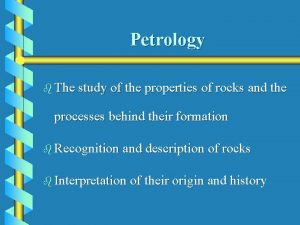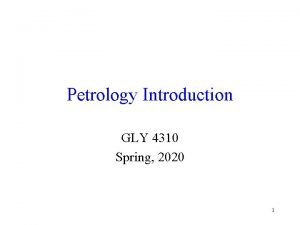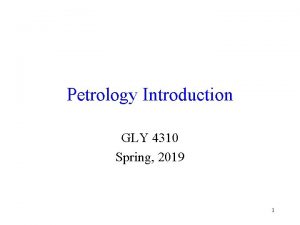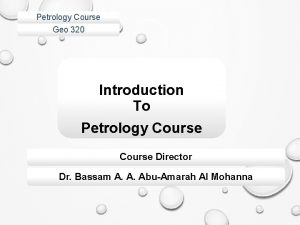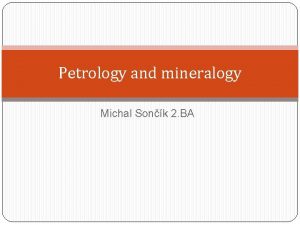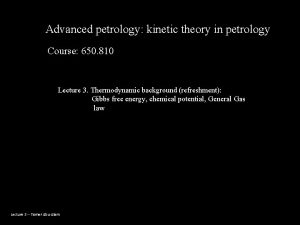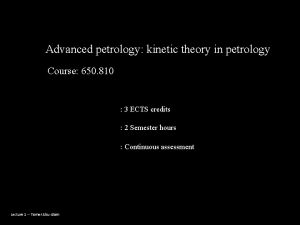Partial melting 2 Melting reactions experimental petrology Melting










- Slides: 10

Partial melting 2. Melting reactions, experimental petrology Melting of the crust

Qz-Ab-Or + H 2 O At 1 kbar (supersolvus) At 5 kbar (subsolvus)

Chapter 18: Granitoid Rocks Figure 18 -3. The Ab-Or-Qtz system with the ternary cotectic curves and eutectic minima from 0. 1 to 3 GPa. Included is the locus of most granite compositions from Figure 11 -2 (shaded) and the plotted positions of the norms from the analyses in Table 18 -2. Note the effects of increasing pressure and the An, B, and F contents on the position of thermal minima. From Winter (2001) An Introduction to Igneous and Metamorphic Petrology. Prentice Hall.

5 um powder 12. 7 mm



Chapter 18: Granitoid Rocks Figure 18 -5. a. Simplified P-T phase diagram and b. quantity of melt generated during the melting of muscovite-biotite-bearing crustal source rocks, after Clarke (1992) Granitoid Rocks. Chapman Hall, London; and Vielzeuf and Holloway (1988) Contrib. Mineral. Petrol. , 98, 257 -276. Shaded areas in (a) indicate melt generation. Winter (2001) An Introduction to Igneous and Metamorphic Petrology. Prentice Hall.



Figure 18 -8. Schematic models for the uplift and extensional collapse of orogenically thickened continental crust. Subduction leads to thickened crust by either continental collision (a 1) or compression of the continental arc (a 2), each with its characteristic orogenic magmatism. Both mechanisms lead to a thickened crust, and probably thickened mechanical and thermal boundary layers (“MBL” and “TBL”) as in (b) Following the stable situation in (b), either compression ceases (c 1) or the thick dense thermal boundary layer is removed by delamination or convective erosion (c 2). The result is extension and collapse of the crust, thinning of the lithosphere, and rise of hot asthenosphere (d). The increased heat flux in (d), plus the decompression melting of the rising asthenosphere, results in bimodal postorogenic magmatism with both mafic mantle and silicic crustal melts. Winter (2001) An Introduction to Igneous and Metamorphic Petrology. Prentice Hall.
 Petrology is the study of
Petrology is the study of Experimental vs non experimental
Experimental vs non experimental Experimental vs non experimental
Experimental vs non experimental Nonexperimental study
Nonexperimental study Solomon four group design
Solomon four group design Experimental vs non experimental research
Experimental vs non experimental research How to write a balanced redox reaction
How to write a balanced redox reaction Chemical reactions section 2 classifying chemical reactions
Chemical reactions section 2 classifying chemical reactions Types of reactions
Types of reactions Section 2 classifying chemical reactions
Section 2 classifying chemical reactions Unit 5 chemical reactions answers
Unit 5 chemical reactions answers
